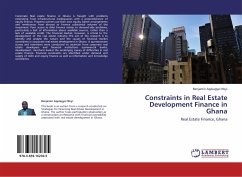
A LAND AND REAL ESTATE MARKET, A FACTOR OF CHANGE
Spatial mutation and constraining and conflicting practices of private and community actors in Abidjan
Versandkostenfrei!
Versandfertig in 1-2 Wochen
26,99 €
inkl. MwSt.

PAYBACK Punkte
13 °P sammeln!
The various population censuses in Abidjan show a high proportion of new arrivals over the decades. From 951,216 individuals in 1975, the city had 1,929,079 in 1988, 2,877,948 in 1998 and 4,395,243 in 2014 according to the general population and housing census of the latter year. This demographic dynamic is leading to an explosion in housing needs. In this context, the search for land and property is growing in Abidjan. Thus, it contributes to the transformation of landscapes and spatial organization in this agglomeration. Construction methods are increasingly being adopted in order to make ma...
The various population censuses in Abidjan show a high proportion of new arrivals over the decades. From 951,216 individuals in 1975, the city had 1,929,079 in 1988, 2,877,948 in 1998 and 4,395,243 in 2014 according to the general population and housing census of the latter year. This demographic dynamic is leading to an explosion in housing needs. In this context, the search for land and property is growing in Abidjan. Thus, it contributes to the transformation of landscapes and spatial organization in this agglomeration. Construction methods are increasingly being adopted in order to make maximum use of building space. Through this study, we want to present the spatial changes that have taken place in the Ivorian economic capital due to the land and property market in the early 2000s and to highlight the restrictive practices of private actors in the sector. To achieve this, we have based our methodology on documentary research, supplemented by a field survey, within the framework of a descriptive and analytical approach.












